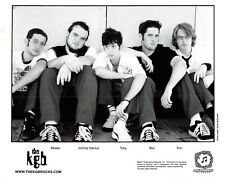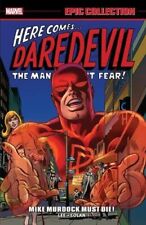When you click on links to various merchants on this site and make a purchase, this can result in this site earning a commission. Affiliate programs and affiliations include, but are not limited to, the eBay Partner Network.
Like Marie Taglioni, Fanny Elssler, Loie Fuller, and Anna Pavlova, she\'s one of the most honored names in the history of dance. A magificent large original silver print photograph circa 1907 of the legendary dancer Isadora Duncan in costume by Otto, Paris. Overall dimensions twelve and a quarter by eight and five eighths inches with image seven and one eighth by three and seven eighths inches. Light wear otherwise good. See Isadora Duncan\'s extraordinary biography below.
Shipping discounts for multiple purchases. Credit cards accepted with Paypal. Inquiries always welcome. Please visit my other items for more early theatre, opera, and historical autographs, photographs, broadsides and programs and great actor and actress cabinet photos and CDV\'s.
From Wikipedia:
Angela Isadora Duncan (May 26 or 27, 1877 – September 14, 1927) was an American dancer. Born in California, she lived in Western Europe and the Soviet Union from the age of 22 until her death at age 50. She performed to acclaim throughout Europe.
Duncan\'s fondness for flowing scarves contributed to her death in an automobile accident in Nice, France, when she was a passenger in an Amilcar. Her silk scarf, draped around her neck, became entangled around the open-spoked wheels and rear axle, breaking her neck.[2] In 1987, she was inducted into the National Museum of Dance\'s Mr. & Mrs. Cornelius Vanderbilt Whitney Hall of Fame.
Early life
Angela Isadora Duncan was born in San Francisco, California to Joseph Charles Duncan (1819–1898), a banker, mining engineer and connoisseur of the arts, and Mary Isadora Gray (1849–1922). Duncan was the youngest of four children. Her two brothers were Augustin Duncan and Raymond Duncan; her sister Elizabeth Duncan was also a dancer.[citation needed] Soon after Isadora\'s birth, her father lost the bank, was publicly disgraced, and the family became extremely poor.
Her parents were divorced by 1889 (the papers were lost in the San Francisco earthquake), and her mother moved with her family to Oakland. She worked there as a music teacher. In her early years, Duncan did attend school but, finding it to be constricting to her individuality, she dropped out. As her family was very poor, both she and her sister gave dance classes to local children to earn extra money.
In 1896 Duncan became part of Augustin Daly\'s theater company in New York. She soon became disillusioned with the form. Her father, along with his third wife and their daughter, died in 1898 when the British passenger steamer SS Mohegan hit some rocks off the coast of Cornwall.[3]
Work
Duncan began her dancing career by teaching lessons in her home from the time she was six through her teenage years. Her different approach to dance is evident in these preliminary classes, in which she “followed [her] fantasy and improvised, teaching any pretty thing that came into [her] head”.[4] A desire to travel brought Duncan to Chicago where she auditioned for many theater companies, finally finding a place in Augustin Daly\'s company. This job took her to New York City where her unique vision of dance clashed with the popular pantomimes of theater companies.[5]
Feeling unhappy and limited with her work in Daly’s company and with American audiences, Duncan decided to move to London in 1898. There she found work performing in the drawing rooms of the wealthy and drew inspiration from the Greek vases and bas-reliefs in the British Museum.[6] The money she earned from these engagements allowed her to rent a dance studio to develop her work and create larger performances for the stage.[7] From London, Duncan traveled to Paris, where she drew inspiration from the Louvre and the Exposition Universelle of 1900.[8]
One day in 1902, Loie Fuller visited Duncan’s studio and invited Duncan to tour with her. This took Duncan all over Europe creating new works using her innovative dance technique.[9] This style consisted of a focus on natural movement instead of the rigid technique of ballet.[10] She spent most of the rest of her life in this manner, touring in Europe as well as North and South America, where she performed to mixed critical reviews.[11] Despite the critics’ mixed reactions, she became quite popular for her distinct style and inspired many visual artists, such as Antoine Bourdelle, Auguste Rodin,Arnold Ronnebeck, and Abraham Walkowitz, to create works based on her.[12]
Duncan disliked the commercial aspects of public performance like touring and contracts because she felt they distracted her from her real mission: the creation of beauty and the education of the young.[citation needed] To achieve her mission, she opened schools to teach young women her dance philosophy. The first was established in 1904 in Grunewald, Germany. This institution was the birthplace of the \"Isadorables\" – Anna, Maria-Theresa, Irma, Lisel, Gretel, Erika, Isabelle and Temple (Isadora\'s niece)[13] – Duncan’s protégées, who would go on to continue her legacy.[14] Later, Duncan established a school in Paris that was shortly closed due to the outbreak of World War I.[15]
In 1910, Duncan met the occultist Aleister Crowley at a party (an episode recounted by Crowley in his Confessions abridged ed, p. 676) where he refers to Duncan under the name \'Lavinia King\'; he would use the same invented name for her in his novel Moonchild. Crowley wrote of Duncan: \"Isadora Duncan has this gift of gesture in a very high degree. Let the reader study her dancing, if possible in private than in public, and learn the superb \'unconsciousness\'- which is magical consciousness - with which she suits the action to the melody.\"[16] Crowley was in fact more attracted to Duncan\'s bohemian companion Mary Dempsey/Mary D\'Este or Desti (with whom Crowley had an affair). Desti had come to Paris in 1901 where she soon met Duncan; the two became inseparable friends. Desti also appeared in Moonchild, as \'Lisa la Giuffria\'. She joined Crowley\'s occult order, helping him to write his magnum opus Magick: Book 4 under her magical name of \'Soror Virakam\'; she also co-edited four numbers of Crowley\'s journal The Equinox and contributed several collaborative plays to the journal. Mary Desti wrote a memoir of her experiences with Duncan that includes some autobiographical material - The Untold Story: The Life of Isadora Duncan 1921-1927 (1929). A terrible irony of their relationship is that the scarf that accidentally killed Duncan was a gift from Desti.
In 1911 the French fashion designer Paul Poiret rented a mansion called Pavillon du Butard in La Celle-Saint-Cloud and threw lavish parties, including one of the more famous grandes fêtes on 20 June 1912,La fête de Bacchus (re-creating the Bacchanalia hosted by Louis XIV at Versailles). Isadora Duncan, wearing a Hellenic evening gown designed by Poiret,[17] danced on tables among 300 guests and 900 bottles of champagne were consumed until the first light of day.[17]
Duncan, said to have posed for the photographer Eadweard Muybridge,[18] placed an emphasis on \"evolutionary\" dance motion, insisting that each movement was born from the one that preceded it, that each movement gave rise to the next, and so on in organic succession. Her dancing defined the force of progress, change, abstraction and liberation. In France, as elsewhere, Duncan delighted her audience.[19]
In 1914, Duncan moved to the United States and transferred the school there. A townhouse on Gramercy Park was provided for its use, and its studio was nearby, on the northeast corner of 23rd Street andFourth Avenue, which is now Park Avenue South.[20] Otto Kahn, the head of Kuhn, Loeb & Co. gave Duncan use of the very modern Century Theatre at West 60th Street and Central Park West for her performances and productions, which included a staging of Oedipus Rex, which involved almost all of Duncan\'s extended entourage and friends.[21]
Duncan had been due to leave the US in 1915 on board the RMS Lusitania on the voyage on which it sank, but historians believe her financial situation at the time drove her to choose a more modest crossing.[22] In 1921, her leftist sympathies took her to the Soviet Union where she founded a school in Moscow. However, the Soviet government’s failure to follow through on promises to support her work caused her to move West and leave the school to Irma.[23]
Philosophy and technique
Breaking with convention, Duncan imagined she had traced the art of dance back to its roots as a sacred art.[24] She developed within this notion free and natural movements inspired by the classical Greek arts, folk dances, social dances, nature and natural forces as well as an approach to the new American athleticism which included skipping, running, jumping, leaping and tossing.
Duncan’s philosophy of dance moved away from rigid ballet technique and towards what she perceived as natural movement. To restore dance to a high art form instead of entertainment, she sought the connection between emotions and movement: “I spent long days and nights in the studio seeking that dance which might be the divine expression of the human spirit through the medium of the body’s movement.”[25] Duncan took inspiration from ancient Greece and combined it with an American love of freedom. This is exemplified in her revolutionary costume of a white Grecian tunic and bare feet. Inspired by Grecian forms, her tunics also allowed a freedom of movement corseted ballet costumes and pointe shoes did not.[26] Costumes were not the only inspiration Duncan took from Greece. She was very inspired by ancient Greek art and utilized some of those forms in her movement (see image).[27]
Duncan wrote of American dancing: “let them come forth with great strides, leaps and bounds, with lifted forehead and far-spread arms, to dance.”[28] Her focus on natural movement emphasized steps, such as skipping, outside of codified ballet technique. Duncan also cited the sea as an early inspiration for her movement.[29] Also, she believed movement originated from the solar plexus, which she thought was the source of all movement.[25] It is this philosophy and new dance technique that garnered Duncan the title of the creator of modern dance.
Personal life
Both in her professional and private lives, Duncan flouted traditional mores and morality. She was bisexual,[30] and alluded to her Communism during her last United States tour, in 1922–23; Duncan waved a red scarf and bared her breast on stage in Boston, proclaiming, \"This is red! So am I!\"[31]
Duncan was an atheist.[32]
Duncan bore two children, both out of wedlock – the first, Deirdre (born September 24, 1906), by theatre designer Gordon Craig, and the second, Patrick (born May 1, 1910),[33] by Paris Singer, one of the many sons of sewing machine magnate Isaac Singer. Both children died in an accident on the Seine River on April 19, 1913. The children were in the car with their nurse, returning home after lunch with Isadora and Paris Singer. The driver stalled the car while attempting to avoid a collision with another car. He got out to hand-crank the engine, but forgot to set the parking brake. The car rolled across the Boulevard Bourdon, down the embankment and into the river. The children and the nanny drowned.[33]
Following the accident, Duncan spent several months recuperating in Corfu with her brother and sister. After this, she spent several weeks at the Viareggio seaside resort with actress Eleonora Duse. The fact that Duse had just left a relationship with the rebellious and epicene young feminist Lina Poletti fueled speculation as to the nature of Duncan and Duse\'s relationship, but there has never been an indication the two were involved romantically.[34] In her autobiography, Duncan relates that she begged a young Italian stranger - the sculptor Romano Romanelli[35] – to sleep with her because of her desperation to have another baby. She did become pregnant after the deaths of her elder two children and gave birth on August 13, 1914 to another illegitimate child, a son, but he lived only a few hours and was never named.
In 1922 she married the Russian poet Sergei Yesenin who was 18 years her junior. Yesenin accompanied her on a tour of Europe and the United States. The following year he left Duncan and returned to Moscow.
Duncan had a relationship with poet and playwright Mercedes de Acosta which is documented in numerous revealing letters they wrote to each other.[38] In one she wrote, \"Mercedes, lead me with your little strong hands and I will follow you – to the top of a mountain. To the end of the world. Wherever you wish.\"[39]
Later life
By the end of her life Duncan\'s performing career had dwindled and she became as notorious for her financial woes, scandalous love life and all-too-frequent public drunkenness as for her contributions to the arts. She spent her final years moving between Paris and the Mediterranean, running up debts at hotels. She spent short periods in apartments rented on her behalf by a decreasing number of friends and supporters, many of whom attempted to assist her in writing an autobiography. They hoped it might be successful enough to support her.[citation needed] In a reminiscent sketch, Zelda Fitzgerald wrote how she and F. Scott Fitzgerald, her husband, sat in a Paris cafe watching a somewhat drunk Duncan. He would speak of how memorable it was, but what Zelda recalled was that while all eyes were watching Duncan, Zelda was able to steal the salt and pepper shakers from the table.[40]
In his book Isadora, an Intimate Portrait, Sewell Stokes, who met Duncan in the last years of her life, describes her extravagant waywardness. Duncan\'s autobiography My Life was published in 1927. Composer Percy Grainger called Isadora\'s autobiography a \"life-enriching masterpiece.\"[41]
Death
On the night of September 14, 1927 in Nice, France, Duncan was a passenger in an Amilcar automobile owned by Benoît Falchetto, a French-Italian mechanic. She wore a long, flowing, hand-painted silk scarf, created by the Russian-born artist Roman Chatov, a gift from her friend Mary Desti, the mother of American film director Preston Sturges. Desti, who saw Duncan off, had asked Duncan to wear a cape in the open-air vehicle because of the cold weather, but Duncan would only agree to wear the scarf.[42] As they departed, Duncan reportedly said to Desti and some companions, \"Adieu, mes amis. Je vais à la gloire!\" (\"Farewell, my friends. I go to glory!\"); but according to American novelist Glenway Wescott, Desti later told him that Duncan\'s actual last words were, \"Je vais à l\'amour\" (\"I am off to love\"). Desti considered this embarrassing, as it suggested that she and Falchetto were going to her hotel for a tryst.
Her silk scarf, draped around her neck, became entangled around the open-spoked wheels and rear axle, hurling her from the open car and breaking her neck.[2] Desti said she called out to warn Duncan about the shawl almost immediately after the car left. Desti brought Duncan to the hospital, where she was declared dead.[42]
As The New York Times noted in its obituary: \"Isadora Duncan, the American dancer, tonight met a tragic death at Nice on the Riviera. According to dispatches from Nice, Miss Duncan was hurled in an extraordinary manner from an open automobile in which she was riding and instantly killed by the force of her fall to the stone pavement.\"[43] Other sources described her death as resulting from strangulation, noting that she was almost decapitated by the sudden tightening of the scarf around her neck. The accident gave rise to Gertrude Stein\'s mordant remark that \"affectations can be dangerous\".[44] At her death, Duncan was a Soviet citizen. Her will was the first of a Soviet citizen to be probated in the U.S.[45]
Duncan was cremated, and her ashes were placed next to those of her children[46] in the columbarium at Père Lachaise Cemetery in Paris. The headstone of her grave contains the inscription École du Ballet de l\'Opéra de Paris (\"Ballet School of the Opera of Paris\").
Legacy
While her schools in Europe did not last long, Isadora Duncan\'s work had impact in the art and her style is still danced based upon the instruction of Maria-Theresa Duncan, Anna Duncan, and Irma Duncan, three of her six adopted daughters.[who?] Through her sister, Elizabeth, Duncan\'s approach was adopted by Jarmila Jeřábková from Prague where her legacy persists.[47] By 1913 she was already being celebrated. When the Théâtre des Champs-Élysées was built, Duncan\'s likeness was carved in its bas-relief over the entrance by sculptor Antoine Bourdelle and included in painted murals of the nine muses by Maurice Denis in the auditorium. In 1987, she was inducted into the National Museum of Dance and Hall of Fame.
Anna, Lisa, Theresa and Irma, pupils of Isadora Duncan\'s first school, carried on the aesthetic and pedagogical principles of Isadora\'s work in New York and Paris, where leading current exponents through direct lineage are Lori Belilove[48]and Barbara Kane.










